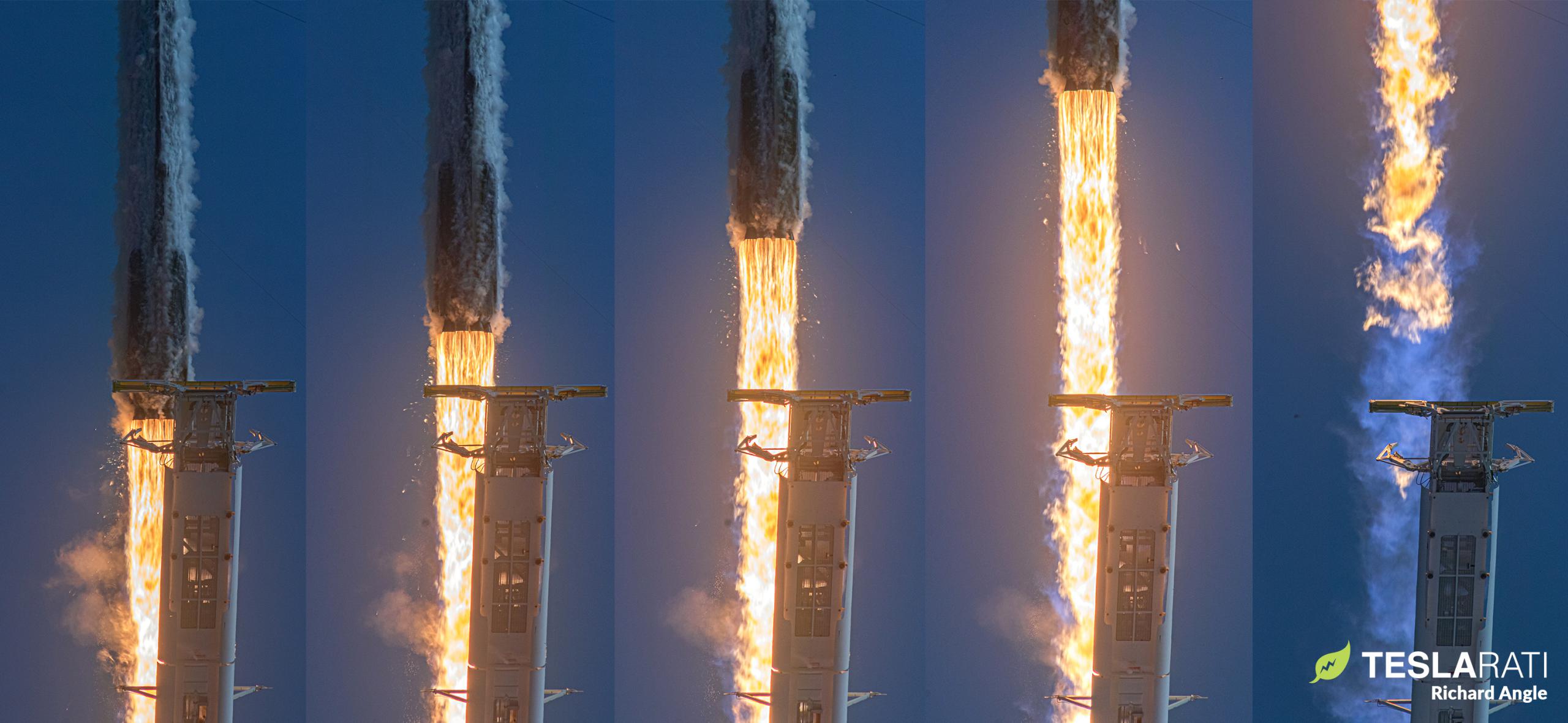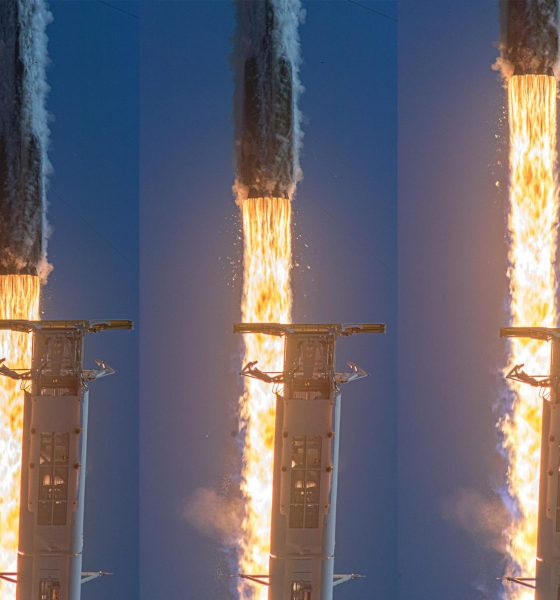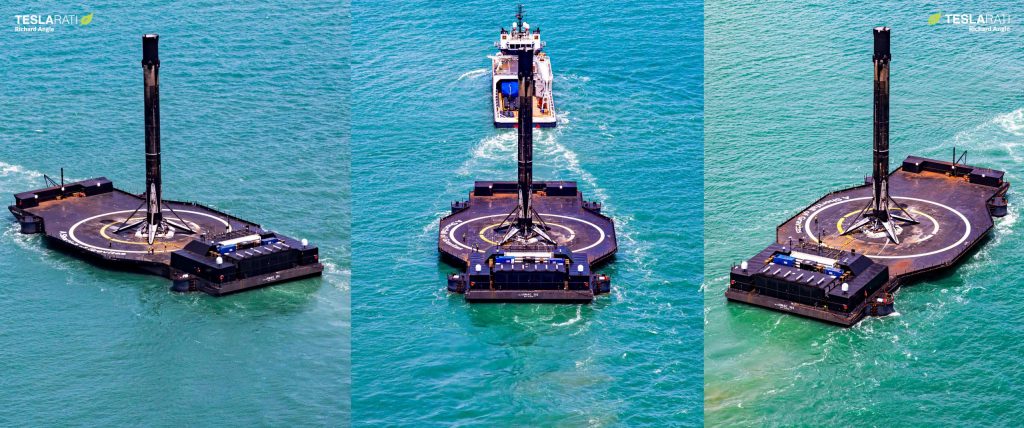

News
SpaceX targeting 100 launches in 2023
CEO Elon Musk says that SpaceX is aiming to complete up to 100 launches in 2023 while the company continues to set records in 2022.
In the history of orbital spaceflight, no family of rockets – let alone a single variant like Falcon 9 – has completed more than 61 successful launches in one calendar year. The cadence target Musk is suggesting is unprecedented and would be an extraordinary challenge even for SpaceX, a company that just completed its 50th successful Falcon 9 launch in a little over 12 months. However, it’s less impossible than it sounds.
After a few years of stagnation at a cadence of roughly 15-20 launches per year from 2017 through 2019, and an impressive doubling from 2019 to 2020 as Starlink entered its buildout phase, SpaceX effectively flipped a switch in 2021. 2020 appears to have been a sort of trial run, demonstrating that SpaceX was able to launch one Falcon 9 rocket every two weeks. At 26 launches for the year, it broke SpaceX’s previous record – 21 launches, set in 2018 – by almost 25%. But something changed in 2021.
In the first half of the year, SpaceX launched 20 times, demonstrating an unexpected 50% improvement over 2020’s annual cadence. In the second half of the year, SpaceX had two strange gaps of almost two months each, during which it didn’t once. In the other two months, though, SpaceX launched 11 times, effectively demonstrating another launch cadence improvement of more than 50% over the first half of the year. Finally, SpaceX completed 6 of those 11 launches in a period of 4 weeks near the end of the year – an annual cadence of 78 launches if sustained for a full year.
Thus far, 2022 has been an eight-month extension of the last few weeks of 2021. SpaceX even appears to have improved upon itself again, accelerating its launch cadence throughout the year. In the first half of the year, SpaceX managed 27 Falcon 9 launches, nearly beating the 31-launch record it set in 2021 in half the time and demonstrating an annual cadence of up to 54 launches per year if sustained.
Instead of continuing that already impressive pace in the second half of the year, SpaceX launched six times in July and another six times in August, sustaining an annualized cadence of 72 launches per year for two full months. At the moment, that could be considered a fluke. But if SpaceX manages another six launches in September, which is the plan, it can likely be deemed a new normal for Falcon 9 launch cadence.
From 60 to 100
To achieve 100 Falcon launches in 2023, SpaceX would need to find a way to launch an average of eight times per month, an improvement of 33% over the six-launch months the company appears to be increasingly comfortable with. Likely thanks to intentional planning and overengineering done years in advance of the payoff, SpaceX’s fleet of Falcon launch pads and recovery ships – drone ship landing platforms especially – appear to be capable of achieving that lofty cadence goal.


Assuming all three pads were able to consistently operate at their fastest demonstrated turnaround times with little to no downtime, they could theoretically support around 115 launches per year. SpaceX drone ship availability is another concern, but the current fleet of three ships can theoretically support 100 Falcon 9 landings in one year if each ship is able to recover one booster every 11 days. Of course, achieving such tight margins would require extremely inflexible scheduling and leave almost no margin for error – perhaps just a day or less per launch, on average.
Without significant upgrades, either feat would be extremely impressive on its own. Stacking those challenges, launching 100 times in 2023 would require an extraordinary effort and a good amount of luck. But it’s far from impossible. Gven the abrupt and impressive progress SpaceX has made and continues to make in 2021 and 2022, it’s also a reasonable goal: far from easy but well within reach with some moderate improvements.
Finally, Musk’s calculus may include a number of launches of SpaceX’s next-generation Starship rocket, which would make the task even more achievable for Falcon 9 and Falcon Heavy. Time will tell, and SpaceX’s activity in the last four months of 2022 will make it clear whether 2023’s 100-launch target is truly feasible.

News
Tesla FSD fleet is nearing 7 billion total miles, including 2.5 billion city miles
As can be seen on Tesla’s official FSD webpage, vehicles equipped with the system have now navigated over 6.99 billion miles.

Tesla’s Full Self-Driving (Supervised) fleet is closing in on almost 7 billion total miles driven, as per data posted by the company on its official FSD webpage.
These figures hint at the massive scale of data fueling Tesla’s rapid FSD improvements, which have been quite notable as of late.
FSD mileage milestones
As can be seen on Tesla’s official FSD webpage, vehicles equipped with the system have now navigated over 6.99 billion miles. Tesla owner and avid FSD tester Whole Mars Catalog also shared a screenshot indicating that from the nearly 7 billion miles traveled by the FSD fleet, more than 2.5 billion miles were driven inside cities.
City miles are particularly valuable for complex urban scenarios like unprotected turns, pedestrian interactions, and traffic lights. This is also the difference-maker for FSD, as only complex solutions, such as Waymo’s self-driving taxis, operate similarly on inner-city streets. And even then, incidents such as the San Francisco blackouts have proven challenging for sensor-rich vehicles like Waymos.
Tesla’s data edge
Tesla has a number of advantages in the autonomous vehicle sector, one of which is the size of its fleet and the number of vehicles training FSD on real-world roads. Tesla’s nearly 7 billion FSD miles then allow the company to roll out updates that make its vehicles behave like they are being driven by experienced drivers, even if they are operating on their own.
So notable are Tesla’s improvements to FSD that NVIDIA Director of Robotics Jim Fan, after experiencing FSD v14, noted that the system is the first AI that passes what he described as a “Physical Turing Test.”
“Despite knowing exactly how robot learning works, I still find it magical watching the steering wheel turn by itself. First it feels surreal, next it becomes routine. Then, like the smartphone, taking it away actively hurts. This is how humanity gets rewired and glued to god-like technologies,” Fan wrote in a post on X.
News
Tesla starts showing how FSD will change lives in Europe
Local officials tested the system on narrow country roads and were impressed by FSD’s smooth, human-like driving, with some calling the service a game-changer for everyday life in areas that are far from urban centers.

Tesla has launched Europe’s first public shuttle service using Full Self-Driving (Supervised) in the rural Eifelkreis Bitburg-Prüm region of Germany, demonstrating how the technology can restore independence and mobility for people who struggle with limited transport options.
Local officials tested the system on narrow country roads and were impressed by FSD’s smooth, human-like driving, with some calling the service a game-changer for everyday life in areas that are far from urban centers.
Officials see real impact on rural residents
Arzfeld Mayor Johannes Kuhl and District Administrator Andreas Kruppert personally tested the Tesla shuttle service. This allowed them to see just how well FSD navigated winding lanes and rural roads confidently. Kruppert said, “Autonomous driving sounds like science fiction to many, but we simply see here that it works totally well in rural regions too.” Kuhl, for his part, also noted that FSD “feels like a very experienced driver.”
The pilot complements the area’s “Citizen Bus” program, which provides on-demand rides for elderly residents who can no longer drive themselves. Tesla Europe shared a video of a demonstration of the service, highlighting how FSD gives people their freedom back, even in places where public transport is not as prevalent.
What the Ministry for Economic Affairs and Transport says
Rhineland-Palatinate’s Minister Daniela Schmitt supported the project, praising the collaboration that made this “first of its kind in Europe” possible. As per the ministry, the rural rollout for the service shows FSD’s potential beyond major cities, and it delivers tangible benefits like grocery runs, doctor visits, and social connections for isolated residents.
“Reliable and flexible mobility is especially vital in rural areas. With the launch of a shuttle service using self-driving vehicles (FSD supervised) by Tesla in the Eifelkreis Bitburg-Prüm, an innovative pilot project is now getting underway that complements local community bus services. It is the first project of its kind in Europe.
“The result is a real gain for rural mobility: greater accessibility, more flexibility and tangible benefits for everyday life. A strong signal for innovation, cooperation and future-oriented mobility beyond urban centers,” the ministry wrote in a LinkedIn post.
News
Tesla China quietly posts Robotaxi-related job listing
Tesla China is currently seeking a Low Voltage Electrical Engineer to work on circuit board design for the company’s autonomous vehicles.

Tesla has posted a new job listing in Shanghai explicitly tied to its Robotaxi program, fueling speculation that the company is preparing to launch its dedicated autonomous ride-hailing service in China.
As noted in the listing, Tesla China is currently seeking a Low Voltage Electrical Engineer to work on circuit board design for the company’s autonomous vehicles.
Robotaxi-specific role
The listing, which was shared on social media platform X by industry watcher @tslaming, suggested that Tesla China is looking to fill the role urgently. The job listing itself specifically mentions that the person hired for the role will be working on the Low Voltage Hardware team, which would design the circuit boards that would serve as the nervous system of the Robotaxi.
Key tasks for the role, as indicated in the job listing, include collaboration with PCB layout, firmware, mechanical, program management, and validation teams, among other responsibilities. The role is based in Shanghai.
China Robotaxi launch
China represents a massive potential market for robotaxis, with its dense urban centers and supportive policies in select cities. Tesla has limited permission to roll out FSD in the country, though despite this, its vehicles have been hailed as among the best in the market when it comes to autonomous features. So far, at least, it appears that China supports Tesla’s FSD and Robotaxi rollout.
This was hinted at in November, when Tesla brought the Cybercab to the 8th China International Import Expo (CIIE) in Shanghai, marking the first time that the autonomous two-seater was brought to the Asia-Pacific region. The vehicle, despite not having a release date in China, received a significant amount of interest among the event’s attendees.








